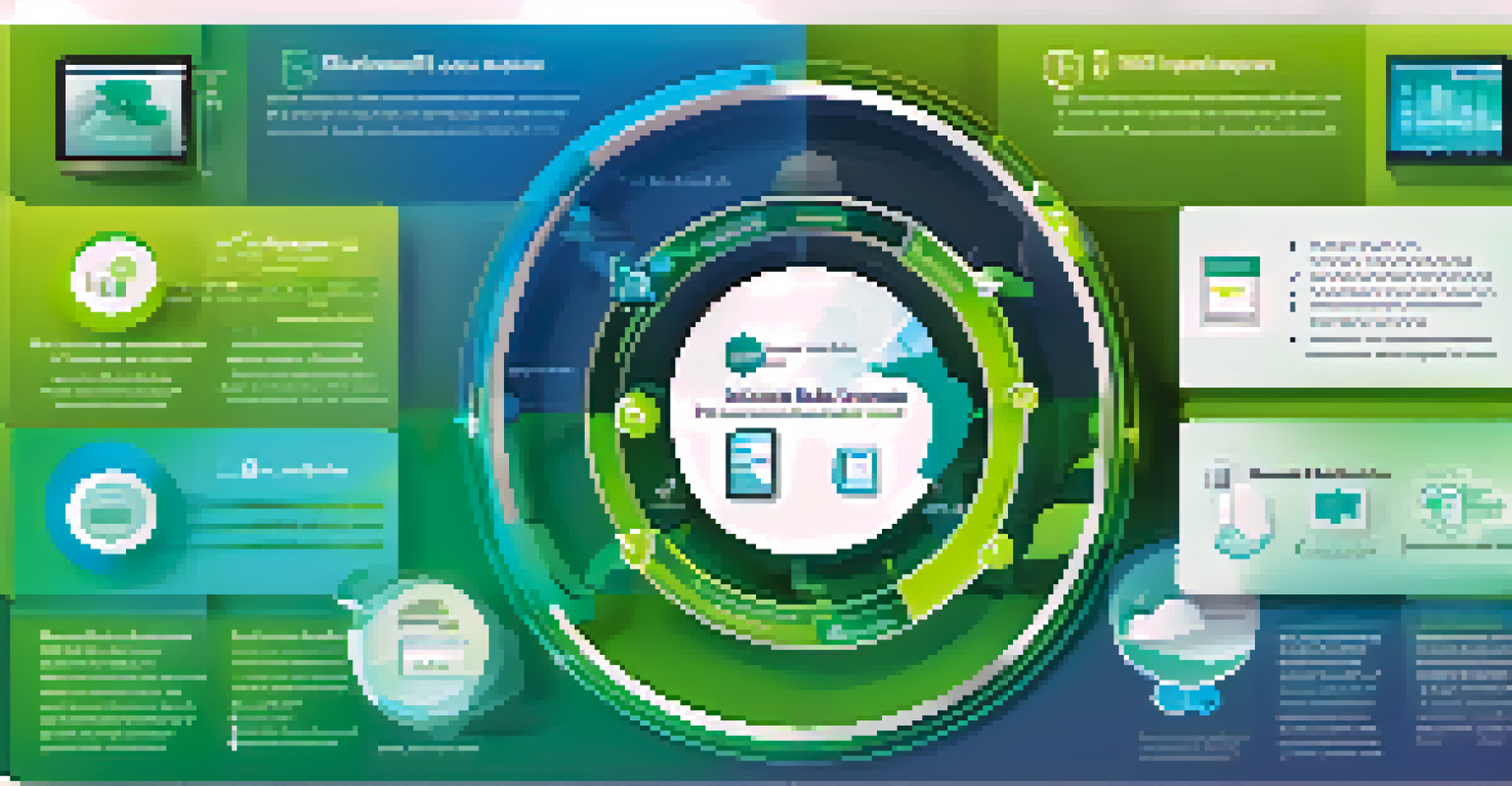How to Choose the Right Data Analytics Tools for Businesses

Understand Your Business Needs Before Choosing Tools
Before diving into the world of data analytics tools, it's crucial to understand what your business specifically needs. Are you looking to analyze customer behavior, track sales performance, or generate marketing insights? Knowing your primary objectives will guide you in selecting the right tools that align with your goals.
In God we trust; all others bring data.
Consider the types of data you currently collect, as well as any additional data you hope to gather in the future. This can help you identify tools that not only meet your current requirements but can also scale with your business. A tool that adapts as your needs evolve can save time and resources in the long run.
Additionally, involve your team in this initial assessment. Their insights on what data is most valuable can provide a clearer picture of what tools will be most effective for your operations.
Evaluate the Features of Different Analytics Tools
Once you have a clear understanding of your needs, it’s time to evaluate the features of various analytics tools. Look for functionalities that are essential for your business, such as data visualization, reporting capabilities, or predictive analytics. These features can significantly enhance your ability to draw actionable insights from your data.

Don’t forget to consider user-friendliness. A tool that is complicated and hard to navigate could deter your team from using it effectively. Opt for tools that offer intuitive interfaces and comprehensive support to ensure a smooth adoption process.
Understand Your Business Needs
Identifying your specific analytics objectives is crucial for selecting the right tools that align with your goals.
Lastly, remember that not all features are created equal. Some tools may offer advanced features that sound great in theory but may not be practical for everyday use. Focus on tools that provide genuine value and meet your specific analytics needs.
Consider Integration with Existing Systems
Integration capabilities are a key factor when choosing data analytics tools. You want tools that can seamlessly connect with your existing systems, such as customer relationship management (CRM) software or enterprise resource planning (ERP) systems. This ensures that data flows smoothly and you have a comprehensive view of your business.
Data is the new oil.
Imagine trying to piece together a puzzle with missing pieces; that’s what it’s like when tools don’t integrate well. Disparate systems can lead to data silos, making it difficult to gain holistic insights. The goal is to have a unified data ecosystem where information is easily accessible and actionable.
Before making a final decision, check if the tools you’re considering offer APIs (Application Programming Interfaces) or built-in integrations with your current stack. This will save you time and potential headaches in the long run.
Assess Scalability for Future Growth
Scalability is an important consideration when selecting data analytics tools. As your business grows, your analytics needs will likely change, so you want tools that can adapt to increased data volume and complexity. Tools that support scalability can save you from the hassle of switching software down the line.
Think about whether the tool can handle larger datasets or provide more advanced features as your needs evolve. A scalable tool doesn’t just accommodate growth; it can also enhance your analytics capabilities, allowing you to derive deeper insights over time.
Evaluate Tool Features Carefully
Focus on essential functionalities and user-friendliness to ensure the tool effectively meets your analytics needs.
Additionally, consider the pricing structure. Some tools may have a low entry cost but can become expensive as you scale. Look for transparent pricing models that align with your growth trajectory.
Evaluate Cost versus Value of Analytics Tools
When it comes to data analytics tools, the cost is often a major consideration. However, it’s essential to evaluate the value these tools provide rather than just focusing on their price tag. A tool that appears expensive might offer functionalities that significantly enhance your decision-making and ROI.
Take the time to compare features, integrations, and support services across various platforms. Sometimes, investing a bit more upfront can lead to better long-term results through improved analytics capabilities. Look for tools that provide a clear return on investment through efficiency gains or richer insights.
Don’t forget to factor in any hidden costs, such as training or additional services. Being mindful of the total cost of ownership will help you make a more informed decision.
Seek Recommendations and Read Reviews
In today’s digital age, seeking recommendations and reading reviews can provide invaluable insights into potential data analytics tools. Connect with peers in your industry or join online communities to gather opinions and experiences. First-hand accounts can help you avoid tools that may not live up to their promises.
Review websites can also provide a wealth of information, offering comparative analyses of features, pricing, and user experiences. Pay attention to both positive and negative reviews to get a balanced view. This can help you identify patterns that might indicate whether a tool is right for your business.
Plan for Team Training and Support
Comprehensive training and ongoing support are vital for enabling your team to fully utilize the chosen analytics tools.
As you gather information, consider reaching out to vendors for demos or trials. Experiencing the tool firsthand can give you a better feel for its usability and whether it meets your business needs.
Plan for Training and Onboarding Your Team
Even the best data analytics tools can fall short if your team isn’t adequately trained to use them. When choosing a tool, consider the training and onboarding resources offered by the vendor. Comprehensive training can make the transition smoother and empower your team to fully utilize the tool’s capabilities.
In-house training sessions can also be beneficial. Encourage team members to share tips and tricks they discover while using the tool, fostering a culture of continuous learning. This collaborative environment can enhance your team's overall proficiency and confidence in using analytics.

Lastly, ongoing support is crucial. Ensure that the vendor provides accessible resources, such as user guides or customer support. This ensures that your team can resolve issues quickly and continue to leverage the tool effectively.